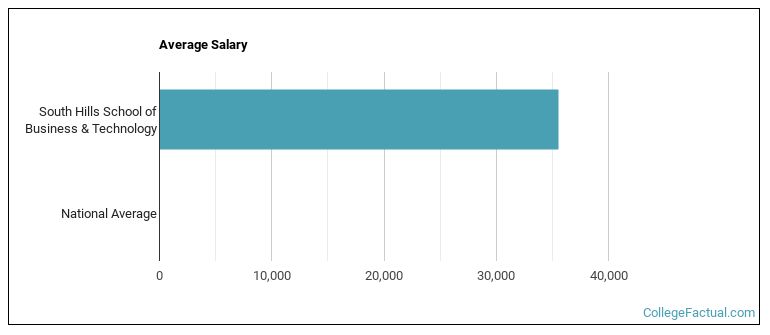 by our College Data Analytics Team
by our College Data Analytics TeamExplore the best ranked schools for the programs you are most interested in.
South Hills School of Business & Technology was not ranked in College Factual's 2025 Best Overall Colleges report. This could be for a number of reasons, including lack of data.
See all of the rankings for South Hills School of Business & Technology.
With an acceptance rate of 98%, South Hills School of Business & Technology is easier to get into than many other schools. But that doesn't mean you can slack off on your application. Make sure to treat this school like any other when submitting requested materials and documents.
The student to faculty ratio is often used to measure the number of teaching resources that a college or university offers its students. The national average for this metric is 15 to 1, but at South Hills School of Business & Technology it is much better at 8 to 1. That's good news for students who want to interact more on a personal level with their teachers.
When estimating how much access students will have to their teachers, some people like to look at what percentage of faculty members are full time. This is because part-time teachers may not have as much time to spend on campus as their full-time counterparts.
The full-time faculty percentage at South Hills School of Business & Technology is 48%. This is comparable to the national average of 47%.
South Hills School of Business & Technology has a freshmen retention rate of 84%. That's a good sign that full-time students like the school and their professors enough to want to stick around for another year. It's also a sign that the admissions team did a good job in choosing applicants who were a good fit for the school.
During the 2017-2018 academic year, there were 307 undergraduates at South Hills School of Business & Technology with 272 being full-time and 35 being part-time.
| $0-30 K | $30K-48K | $48-75 | $75-110K | $110K + |
|---|---|---|---|---|
| $21,847 | $25,422 | $26,777 | $28,933 | $28,987 |
The net price is calculated by adding tuition, room, board and other costs and subtracting financial aid.Note that the net price is typically less than the published for a school. For more information on the sticker price of South Hills School of Business & Technology, see our tuition and fees and room and board pages.
While almost two-thirds of students nationwide take out loans to pay for college, the percentage may be quite different for the school you plan on attending. At South Hills School of Business & Technology, approximately 71% of students took out student loans averaging $6,226 a year. That adds up to $24,904 over four years for those students.
Get more details about paying for South Hills School of Business & Technology.

See which majors at South Hills School of Business & Technology make the most money.
Get more details about the location of South Hills School of Business & Technology.

Contact details for South Hills School of Business & Technology are given below.
| Contact Details | |
|---|---|
| Address: | 480 Waupelani Dr, State College, PA 16801-4516 |
| Phone: | 814-234-7755 |
| Website: | www.southhills.edu/ |
| Most Popular Majors | Bachelor’s Degrees | Average Salary of Graduates |
|---|---|---|
| Allied Health Professions | 20 | NA |
| Health & Medical Administrative Services | 19 | NA |
| Computer Science | 13 | NA |
| Business Administration & Management | 11 | NA |
| Criminal Justice & Corrections | 10 | NA |
| Design & Applied Arts | 10 | NA |
| Allied Health & Medical Assisting Services | 8 | NA |
| Industrial Production Technology | 5 | NA |
| Computer Programming | 4 | NA |
| Accounting | 2 | NA |
Footnotes
*The racial-ethnic minorities count is calculated by taking the total number of students and subtracting white students, international students, and students whose race/ethnicity was unknown. This number is then divided by the total number of students at the school to obtain the racial-ethnic minorities percentage.
References
More about our data sources and methodologies.